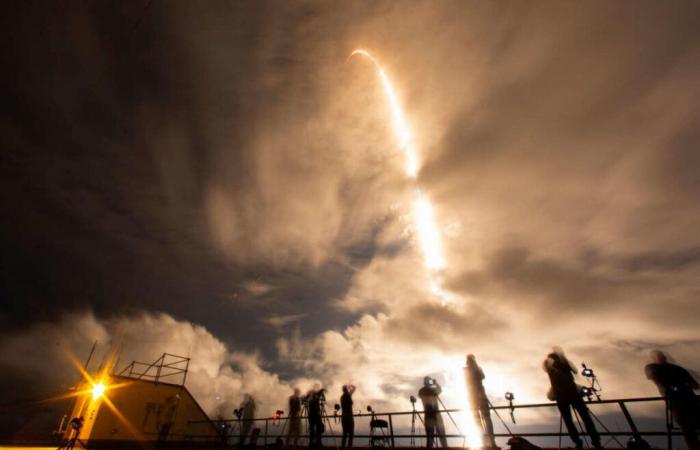“Send us, SpaceX,” said billionaire Jared Isaacman just before leaving “a second time in space”, relate The New York Times. The Polaris Dawn mission, which he commands and finances in collaboration with Elon Musk’s company SpaceX, was launched on Tuesday, September 10, in Florida. It had been postponed due to a helium leak at the end of August, then due to weather conditions.
In addition to Jared Isaacman, founder of the payment processing company Shift4, the crew includes his friend Scott Poteet, a former US Air Force officer, as well as two SpaceX engineers, Anna Menon and Sarah Gillis, the company said. New York Times.
This five-day mission “will set some milestones for private spaceflight, with the first spacewalk by non-professional astronauts, as well as the furthest journey from Earth by anyone since NASA’s moon landings more than fifty years ago.”
With a maximum altitude of 1,400 kilometers above the Earth’s surface, Polaris Dawn would even narrowly beat the 1966 record for a flight into orbit.
A risky exit
The highlight of the trip, the release of the capsule, scheduled for Thursday, will also be “one of the ‘spacewalks’ the riskiest ever attempted”, notes the magazine New Scientist. Unlike recent spacewalks, the interior of the spacecraft will be completely depressurized for about two hours.
For this outing, “SpaceX has designed a new space suit,” add The Country, which can also be used inside the vessel, to which it is connected by an umbilical cord reminiscent of “the beginnings of the space age”.
Preparing for future trips
Many experiments are also scheduled for “to study the effects of space radiation on the human body”in order to prepare “future long-duration missions to return to the Moon within the next decade,” a simple step towards Elon Musk’s dream: one day sending someone to Mars.
“Last big challenge”, completes the Spanish newspaper: becoming “the first astronaut-carrying spacecraft to test laser communications, using SpaceX’s Starlink satellite network,” which could improve communication with astronauts.
[…] - Courrier international






